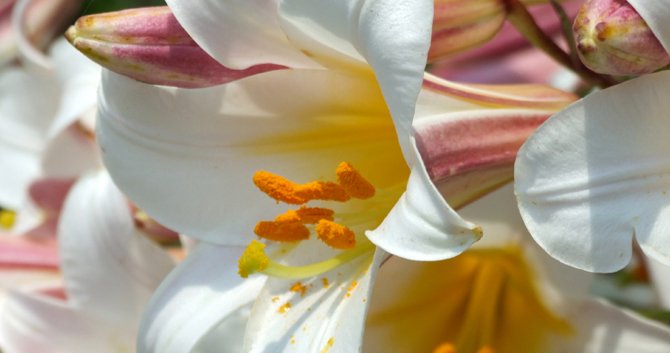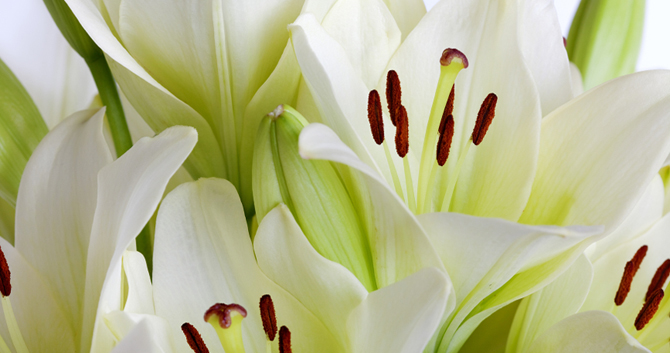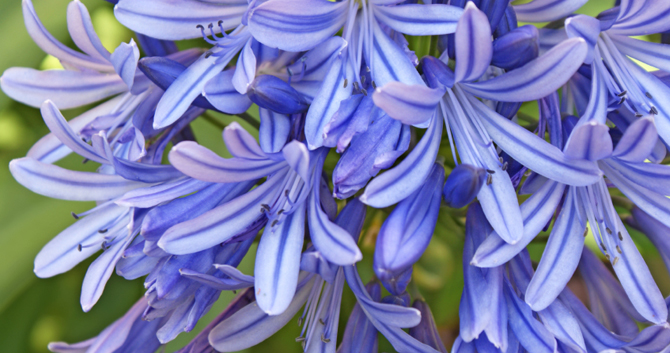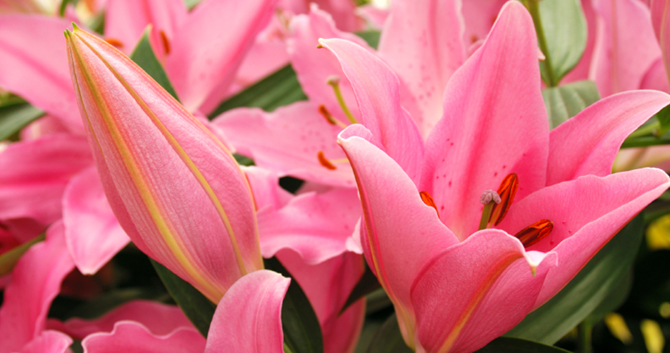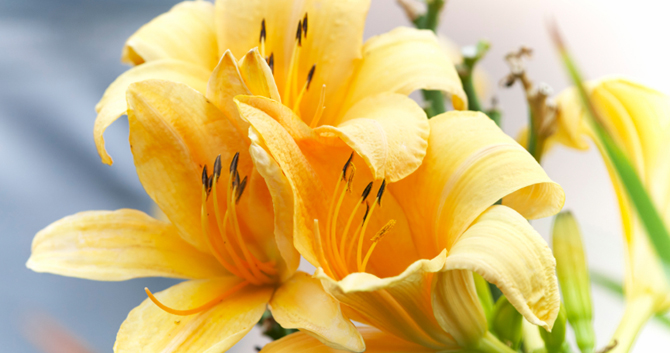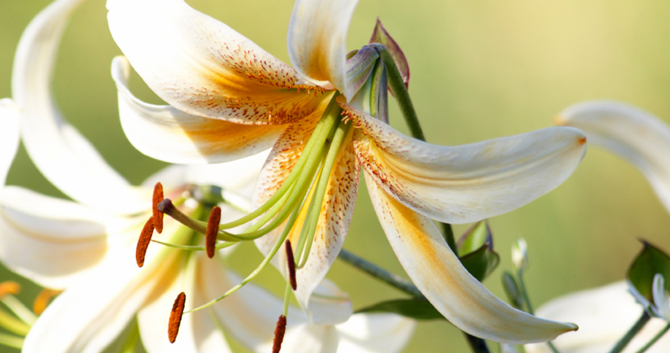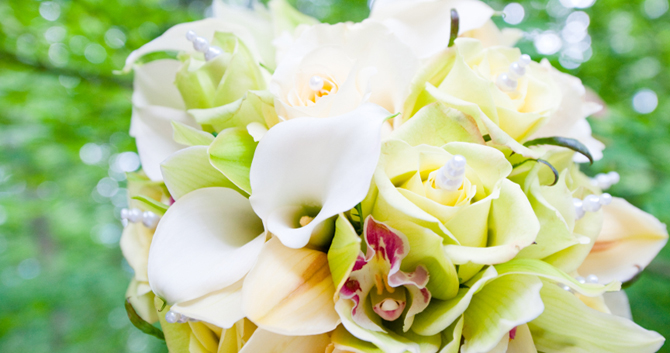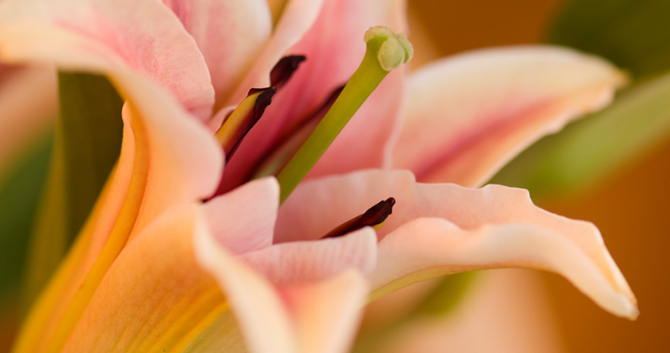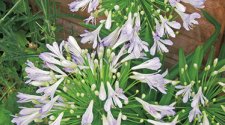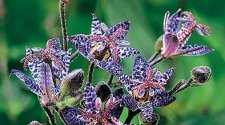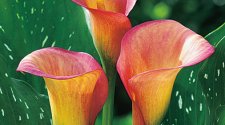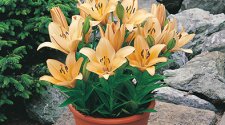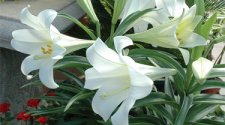Fragrance and elegance in an easy to grow bulb make lilies indispensable flowers in gardens and bouquets. With hundreds of shades to choose from and large trumpet shaped flowers on long sturdy stems, the beauty and fragrance of lilies enhances the mood of any indoor or outdoor setting and makes for an ideal hostess gift. Plus after displaying potted lilies indoors, they can be planted outside to grace your landscape for years to come.
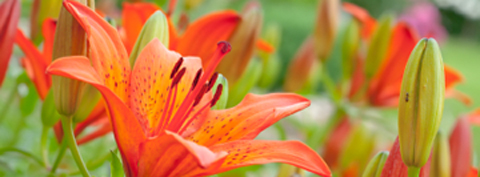 Lilies are one of the most beautiful and fragrant of all summer blooming flowers!
Lilies are one of the most beautiful and fragrant of all summer blooming flowers!
Dating back almost 3,600 years, lilies held a role in ancient mythology, so revered that they were thought to originate from the queen of the gods, so breathtaking it was unimaginable they could have originated on earth. With such a strong devotion, lilies have been under cultivation longer than any other ornamental flower, existing in the gardens of the Himalayas over 3,000 years ago.
Types of lilies:
Exotic Oriental lilies are superb cut flowers with large buds opening over several weeks to 8-12 inch flowers. With their succession of blooms and intense fragrance, a single stalk paired with 3 to 5 flowers in a vase ensures a fabulous presentation! These enormous flowers are also hardy outdoor plants, thriving from Montana to Florida. They create a vibrant display with August blooms that pair perfectly with Lady’s Mantle and Russian Sage to soften the edges and obscure their tall thin stems.
Asiatic lilies are the most commonly grown garden lily and are extremely popular in flower arrangements. Unlike other lilies, most Asiatic varieties don’t have a strong fragrance, but what they lack in scent, they make up for in impact.
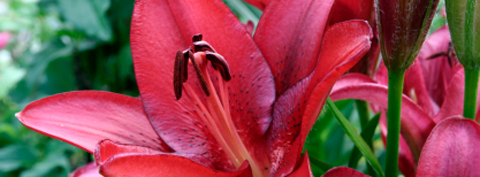 Lilies vibrant colors make your garden fun and unforgettable
Lilies vibrant colors make your garden fun and unforgettable
Prized for their wide range of colors from the softest pastels to fiery reds and oranges floating on small sturdy stems they are the ideal accessory for any gardener or floral designer. They are the earliest lilies to bloom outdoors, popping up during springtime, harmonizing with tulips, creeping phlox, hosta, and allium.
Need some versatility in your garden? Try adding Trumpet lilies to the back of the garden where their statuesque stems tower above most other plants, bringing color to new heights. Trumpet lilies perfume the garden in mid-summer with large elongated buds that begin facing downward and then unfurl into spectacular gold, pink, yellow, apricot, and white blooms. They’re virtually indestructible, perfect for beautifying walkways, foundations, or garden beds, spreading easily once established.
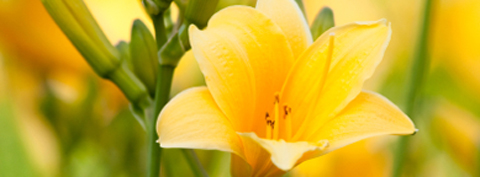 Daylilies are the perfect plant for those hot dry areas where nothing else will grow
Daylilies are the perfect plant for those hot dry areas where nothing else will grow
Daylilies are truly bulletproof plants thanks to their vigorous and adaptable nature. Resistant to most diseases and pests, they will continue to thrive in a drought and multiply each year, readily doubling or tripling in size. While each bloom lasts only a day, plants put forth continuous flowers over the course of several weeks.
Daylilies are available in a remarkable range of diverse colors all the way from rich reds and purples to soft pinks and vibrant yellows and oranges to complement any garden palette. They complement tall spikey flowers like blue salvia, Russian sage, anise hyssop, lavender, and liatrus for a carefree display in early summer.
So how did a plant that naturally blooms in summer become the iconic Easter plant? Long a symbol of purity and grace with the whitest of flowers on bright green stems, Easter lilies can be tricked into blooming prematurely, just in time to adorn church alters at Easter and wedding bouquets in the spring. As an added bonus, potted lilies can be planted outside after blooms area spent where they’ll revert to their natural summer bloom time the following year.
Although not a true lily, Lily of the Nile (agapanthus) is a stunning summer flower with large globe shaped blooms on tall straight stems. Hailing from the river banks of South Africa they thrive in zones 8 through 11, but grow easily as annuals anywhere. Simply plant the bulbs in containers, along walkways, or in the middle of garden beds after danger of frost has passed and enjoy spectacular blue or white blooms in July and August. A planter filled with Lily of the Nile, sedum, and nasturtium is all you'll need for garden color from mid-summer through late autumn.
In the Garden:
Much like the ideal partner, you can count on lilies for years of enjoyment and simple needs. Hardy lily bulbs will return year after year with little attention or maintenance. Unlike many other bulbs, they can be planted in the spring as well as the fall, giving you two chances to add drama and ongoing color from June through September. They are irresistible to hummingbirds which flutter among the blossoms gathering pollen.
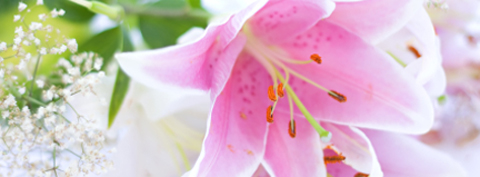 Lilies are unmatched as cut flowers, pairing perfectly with orchids, peonies, phlox, and hydrangea
Lilies are unmatched as cut flowers, pairing perfectly with orchids, peonies, phlox, and hydrangea
No matter which lily you choose, they provide beautiful accents to surrounding annuals, perennials, shrubs and trees. Asiatic and Easter lilies are stunning when planted in masses in the middle of flower gardens, helping transition the garden from low growers in the front and taller plants in the back. Oriental and Trumpet lilies are best planted toward the rear of the garden to add height and hide their long leggy stems.
Plant lily bulbs in full sun and well-drained soil to ensure they thrive and multiply. They need little care other than occasional watering. At the end of the season, there’s no need to worry about your lilies leaving a mess as they produce little foliage and therefore a minimal cleanup!

